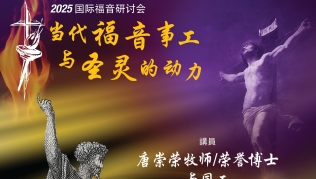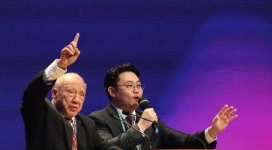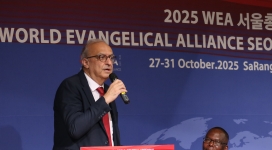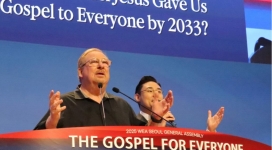Historical Foundation
The Church Union Movement in South India which eventually resulted in the birth of the Church of South India on 27th Sep,1947 is one of the greatest miracles ever performed by God in the first half of the present century.
The story of union is a story of a collaborative venture fraught with innumerable difficulties of one kind or the other. By the grace of God and by the fortitude of the Union leaders, those difficulties were frankly faced and finally over come. It was a venture in which the Divine hand guided the people involved constantly. It was a stupendous task in which the leaders of the movement clearly discovered God’s will and in utter humility tried to fulfil it, if not always. After twenty-eight years of joint consultation in trying patience and fervent hope, the negotiating churches eventually entered into an organic union.
1947! The year of freedom , the creation of New India. The bitter struggle for political independence ended. A new chapter was opened on August 15 when Pandit Nehru, the first Prime Minister of free India, delivered his memorable speech under the caption “Tryst with Destiny?
The same year also witnessed the end of the long process of negotiations for church union. The Methodist J.S.M.Hooper, the pilot of the Union Movement in South India, preached the Inauguration sermon, interpreting the significance of the year: “God has matched us with His hour; the Church of South India has an unparalleled opportunity. The reconciliation between our divergent elements enables us with fresh conviction and force to proclaim the Gospel of reconciliation to all the clashing elements in this nation’s life."
Thus the CSI was constituted by the union of the Madras, Madura, Malabar, Jaffna, Kannada, Telugu and Travancore Church Councils of the South India United Church; the South India Province of the Methodist Church, comprising the Madras, Trichinopoly, Hyderabad and Mysore Districts; and the Madras, Dornakal, Tinnevelly, and Travancore and Cochin of the Church of India, Burma and Ceylon.
The Church of South India began with fourteen dioceses and a membership of 10, 17, 184 of whom 2,63,680 were communicants. At the time of the union, the uniting bodies numbered , in round figures: Methodists 220,000; Presbyterians and Congregationalists (SIUC) 290,000; Anglicans(CIBC) 500,00. The North Tamil Church of the SIUS which in 1946 decided not to join the CSI, joined the united church in 1950. The Bombay Karnataka Council of the United Basel Mission Church in India joined the Church of South India in 1958. The Anglican Church of Nandyal Diocese which chose to stand outside the union in 1947, merged with the CSI in 1975. Today the CSI consists of 21 Dioceses covering entire South India and also Sri Lanka.






![[Exclusive Interview] Evangelist Stephen Tong exhorts the Chinese church to return to the foundations of reformed faith](https://www.gospelherald.com/media/cache/thumbnail/7/23/72340sp_273w_150h_1x_1y.png)
